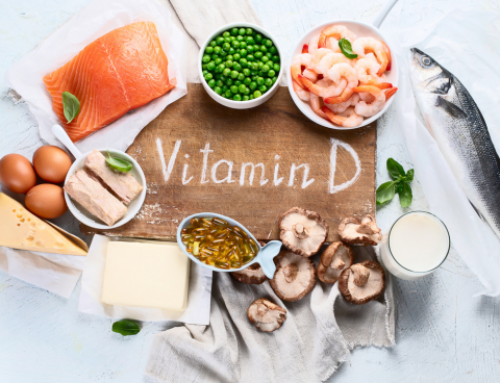Macronutrients, Part I: Carbohydrates
![]()
Carbohydrates are macronutrients—i.e., nutrients required in large amounts for the body to function. They’re also the body’s primary energy source. In this first of a three-part series on macronutrients, we’ll take a look at how carbs operate in the body and how they’re best consumed.
Simple vs. Complex
Simple carbs, which are digested and absorbed quickly into the body, provide a short burst of energy. Complex carbs sustain the body for longer periods.
You should generally avoid foods high in simple sugars such as glucose, fructose and sucrose. Fruits and vegetables naturally contain simple sugars, however, and a balanced diet should simple sugars in a small, controlled amounts.
Starch, fiber and glycogen are complex carbs. Glucose that enters the body and is not immediately used for energy is synthesized to form glycogen, which is a source of stored energy. Glycogen levels are constantly changing, but most athletes have enough glycogen stores to last for the duration of whatever physical activity they’re participating in. The only athletes who might deplete their glycogen stores are endurance athletes, which is why they load up on carbs in the days leading up to an event.
RELATED: Classifying Carbohydrates: Refined and Recommended
Energy Systems
So how does the body turn carbohydrates into energy?
Three biological energy systems help the body replenish ATP (adenosine triphosphate), an essential molecule for energy transfer. Muscle activity and growth can’t occur without ATP.
The two energy systems most essential to an athlete’s diets are:
- Glycolysis: Glycolysis replenishes ATP through the breakdown of carbs. Glycolysis is the primary system for ATP production when the body undergoes physical activity at a rate between 30 and 90 percent of maximum power output, or during physical activity lasting between 15 seconds and 3 minutes.
- Oxidative: The oxidative system breaks down either fats or carbs to replenish ATP. It uses fats to synthesize ATP while the body is at rest, and it synthesizes carbs during low-intensity exercise typically lasting more than three minutes, or between 20 and 30 percent of maximum power output.
The Glycemic Index
The glycemic index (GI) is a system that rates foods based on their effect on insulin levels in the body. The longer it takes a food source to raise blood sugar levels, the lower that food ranks on the GI. The faster a food raises blood sugar, the higher it ranks on the GI.
Generally, an athlete should consume foods low on the GI for sustained energy throughout the day.
How Many Carbohydrates Should You Consume?
The recommended carb intake is 45 to 65 percent of your total calories. That is a pretty general range, so it is important to take your sport into consideration. If you engage in endurance sports, you should consume more carbs (about 8-10g per kg of body weight daily) than you should if you play sprint-based sports (about 5-6g/kg).
What Foods Are Best?
For both sprint and endurance-based sports, the best sources of carbs are:
- Whole grain breads and pastas
- Wild rice
- Sweet potatoes
- Chickpeas
- Hummus
- Non-sugar-laden cereals
- Oats and oatmeal varieties
- Fruits
A healthy combination of all the above will give you the sustainable energy you need to compete. Learn more about the best sources of carbs for athletes.
What Foods Should You Avoid?
Foods that are processed or have substantial amounts of high fructose corn syrup are best to consume only occasionally.
- Soft drinks
- Fast food
- Processed grains (white bread)
- Potato chips
- Donuts, pastries, and other sugary breads
- Sugar-laden cereals
- Syrup
- Canned fruit
- Energy drinks
Consume carbs that are low on the GI one to three hours before a workout or competition, as well as post-workout/competition alongside protein, a combination that has been shown to increase muscle protein synthesis.
References:
- Baechile, T., Earle, R. (2008). The Essentials of Strength Training and Conditioning, Third Edition. National Strength and Conditioning Association. Human Kinetics.
- Mader, S. (2009). Human Biology, 11th Edition. McGraw-Hill.
- Wardlaw, G., Smith, Anne. (2011). Contemporary Nutrition, Eighth Edition. McGraw-Hill.
RECOMMENDED FOR YOU
MOST POPULAR
Macronutrients, Part I: Carbohydrates
![]()
Carbohydrates are macronutrients—i.e., nutrients required in large amounts for the body to function. They’re also the body’s primary energy source. In this first of a three-part series on macronutrients, we’ll take a look at how carbs operate in the body and how they’re best consumed.
Simple vs. Complex
Simple carbs, which are digested and absorbed quickly into the body, provide a short burst of energy. Complex carbs sustain the body for longer periods.
You should generally avoid foods high in simple sugars such as glucose, fructose and sucrose. Fruits and vegetables naturally contain simple sugars, however, and a balanced diet should simple sugars in a small, controlled amounts.
Starch, fiber and glycogen are complex carbs. Glucose that enters the body and is not immediately used for energy is synthesized to form glycogen, which is a source of stored energy. Glycogen levels are constantly changing, but most athletes have enough glycogen stores to last for the duration of whatever physical activity they’re participating in. The only athletes who might deplete their glycogen stores are endurance athletes, which is why they load up on carbs in the days leading up to an event.
RELATED: Classifying Carbohydrates: Refined and Recommended
Energy Systems
So how does the body turn carbohydrates into energy?
Three biological energy systems help the body replenish ATP (adenosine triphosphate), an essential molecule for energy transfer. Muscle activity and growth can’t occur without ATP.
The two energy systems most essential to an athlete’s diets are:
- Glycolysis: Glycolysis replenishes ATP through the breakdown of carbs. Glycolysis is the primary system for ATP production when the body undergoes physical activity at a rate between 30 and 90 percent of maximum power output, or during physical activity lasting between 15 seconds and 3 minutes.
- Oxidative: The oxidative system breaks down either fats or carbs to replenish ATP. It uses fats to synthesize ATP while the body is at rest, and it synthesizes carbs during low-intensity exercise typically lasting more than three minutes, or between 20 and 30 percent of maximum power output.
The Glycemic Index
The glycemic index (GI) is a system that rates foods based on their effect on insulin levels in the body. The longer it takes a food source to raise blood sugar levels, the lower that food ranks on the GI. The faster a food raises blood sugar, the higher it ranks on the GI.
Generally, an athlete should consume foods low on the GI for sustained energy throughout the day.
How Many Carbohydrates Should You Consume?
The recommended carb intake is 45 to 65 percent of your total calories. That is a pretty general range, so it is important to take your sport into consideration. If you engage in endurance sports, you should consume more carbs (about 8-10g per kg of body weight daily) than you should if you play sprint-based sports (about 5-6g/kg).
What Foods Are Best?
For both sprint and endurance-based sports, the best sources of carbs are:
- Whole grain breads and pastas
- Wild rice
- Sweet potatoes
- Chickpeas
- Hummus
- Non-sugar-laden cereals
- Oats and oatmeal varieties
- Fruits
A healthy combination of all the above will give you the sustainable energy you need to compete. Learn more about the best sources of carbs for athletes.
What Foods Should You Avoid?
Foods that are processed or have substantial amounts of high fructose corn syrup are best to consume only occasionally.
- Soft drinks
- Fast food
- Processed grains (white bread)
- Potato chips
- Donuts, pastries, and other sugary breads
- Sugar-laden cereals
- Syrup
- Canned fruit
- Energy drinks
Consume carbs that are low on the GI one to three hours before a workout or competition, as well as post-workout/competition alongside protein, a combination that has been shown to increase muscle protein synthesis.
References:
- Baechile, T., Earle, R. (2008). The Essentials of Strength Training and Conditioning, Third Edition. National Strength and Conditioning Association. Human Kinetics.
- Mader, S. (2009). Human Biology, 11th Edition. McGraw-Hill.
- Wardlaw, G., Smith, Anne. (2011). Contemporary Nutrition, Eighth Edition. McGraw-Hill.











